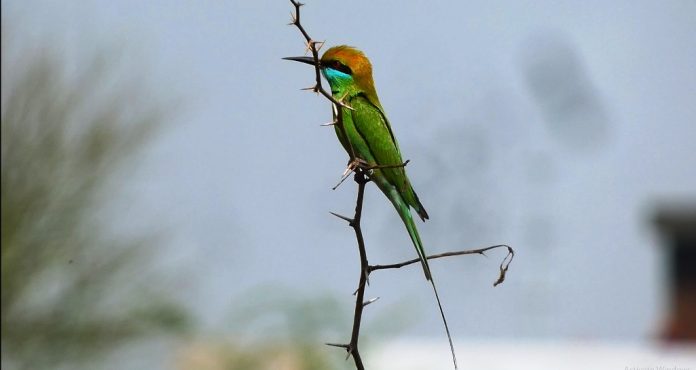Bee-eaters brightly colored birds of elegant form. They are characterized by having the median pair of tail feathers prolonged a couple of inches beyond the others as bristles. The feeding habits of these birds are like those of flycatchers. They make from some perch little sallies in the air after insects. The wings when the spread is triangular. They excavate their nests in sandbanks.
Merops Viridis: The Common Indian Bee-eater. but with rather a long tail. An emerald-green bird with a turquoise throat, black necklace, and a black band through the eye. The wings are shot with bronze, so that, as the bird sails along on outstretched pinions, it looks now green, now bronze, as the rays of the sun are reflected at different angles.
